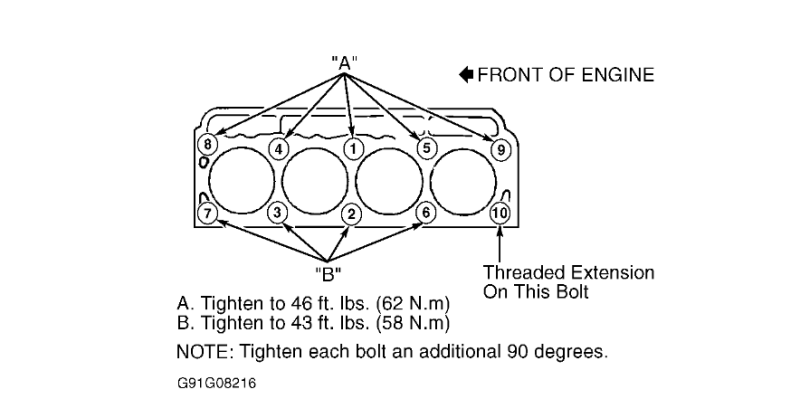So I'm going to be changing my head gasket soon and I'm wondering how to keep the timing in check. I'm not too familiar with overhead valve engines. I mean I know if you had overhead cams you'd need to mark the timing chain/belt and the cams to make sure the timing stays dandy.

Why you changing the headgasket? As any motor will have timing marks, if it be over head or pushrod style. If you don't line them up you will just trash the motor. How ever the 2200 you don't have to touch the timing if just pulling the head. If you were pulling the cam or messing with the timing chain you would. On the 2200 you unloosen the rockers and pull the pushrods out labeling each one so you put them back in the right location.
Any way here is some info on doing it yourself. Besure to put a jack or something under the wishbone mount on the front of the motor to support it.
CYLINDER HEAD
NOTE: When removing valve train components, keep them in order to ensure installation in same location.
Removal (Cavalier & Sunfire)
1. Disconnect negative battery cable. Release fuel system pressure. See FUEL PRESSURE RELIEF. Remove drive belt. Remove air cleaner outlet resonator fasteners. Remove outlet duct. Disconnect hoses, and remove resonator assembly. Disconnect low coolant connector. Remove radiator surge tank, and disconnect hoses. Disconnect coolant return hose. Remove coolant recovery tank.
2. Install Engine Support Fixture (J-28467-360), and raise engine off mount. Remove engine mount assembly. Remove intake manifold. See INTAKE MANIFOLD. Remove exhaust manifold. See EXHAUST MANIFOLD.
3. Disconnect engine coolant temperature sensor (ECT) electrical connection. Raise vehicle. Drain and recover cooling system. Lower vehicle. Remove resonator and duct assembly. Remove resonator bracket/fuel rail cover. Remove left engine wiring harness bracket. Remove valve rocker arm cover. Remove rocker arms and push rods.
4. Remove power steering pump and set aside with lines attached. Remove exhaust manifold heat shield. Remove coolant inlet pipe through exhaust manifold. Raise vehicle. Remove radiator hose from coolant inlet pipe-to-oil pan bolt. Remove inlet pipe bolt cover, inlet pipe and seal.
Remove air cleaner outlet from air cleaner. Remove ICM electrical connectors and spark plug wires. Remove ignition coil bolts. Remove accessory bracket. Disconnect secondary ignition wires from spark plugs. Install Engine Support Fixture (J-28467-360). Remove cylinder head bolts. Remove cylinder head.
Inspection
Inspect cylinder head for warpage at head gasket surface and manifold surfaces. See CYLINDER HEAD table under ENGINE SPECIFICATIONS. DO NOT remove more than .010" (.25 mm) of material from head gasket surface. Inspect for cracks in exhaust ports and combustion chambers. Inspect for external cracks in water chamber. Check valves for squareness, burned heads, cracked faces, or damaged stems.
Installation
Clean carbon from combustion chambers and valve parts with Wire Brush (J-8089). Clean valve pushrods, rocker arms, cylinder head, engine block gasket surfaces, and bolt hole threads in cylinder heads/engine block. Clean valve stems and heads on buffing wheel. Install NEW head gasket. Install cylinder head. Tighten cylinder head bolts to specification in proper sequence. See
Fig. 2. To complete installation, reverse removal procedure. Tighten all fasteners to specification. See TORQUE SPECIFICATIONS. Use Power Steering Pump Pulley Installer (J-25033-C) when installing pulley.
Fig. 2: Cylinder Head Bolt Tightening Sequence

Since the head bolts are tourqe to yield, I would recommend not using them.
I'm changing it because it's leaking a good amount on cylinder #4. I already have a new set of head bolts. Thank you for the information.




